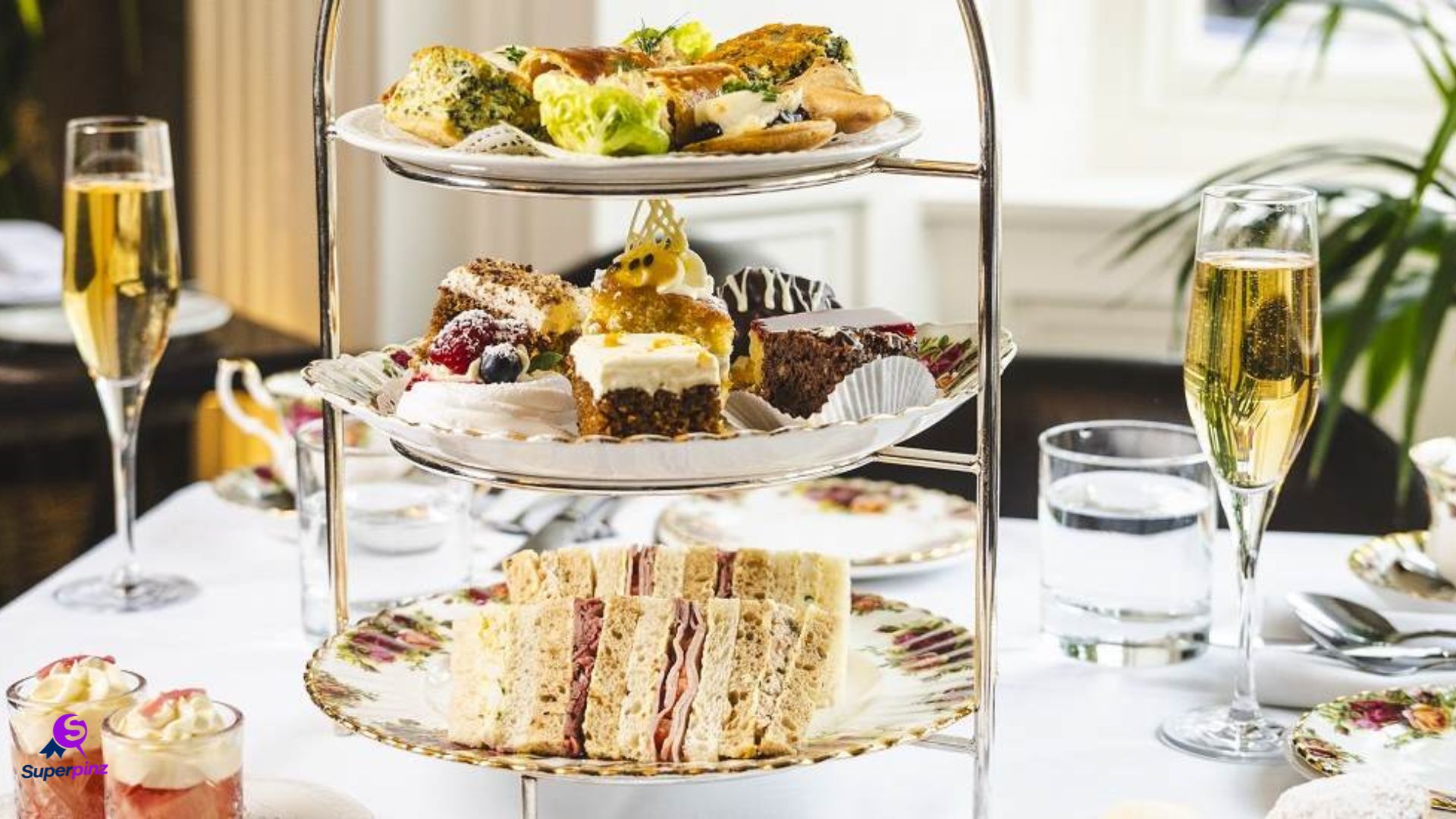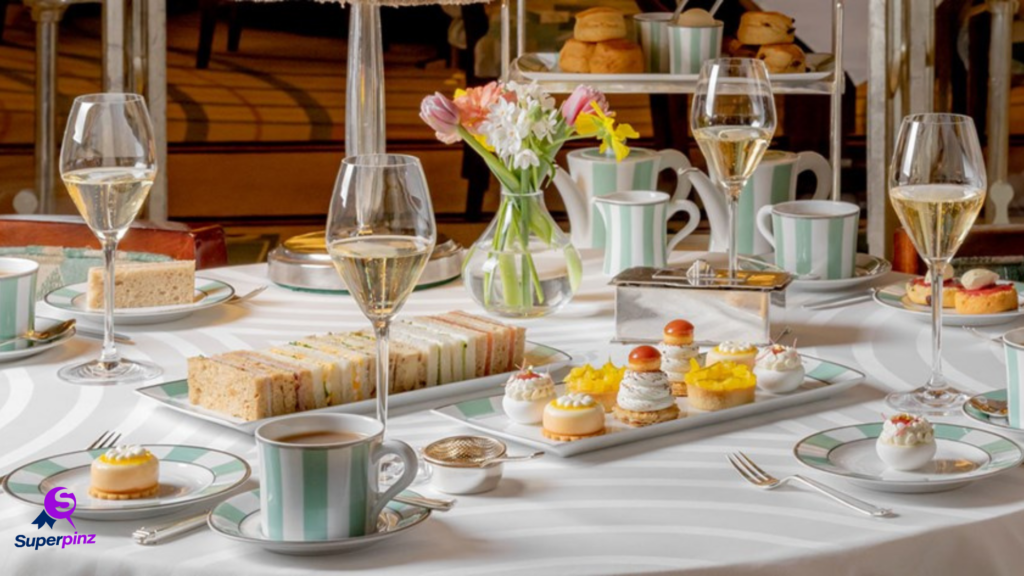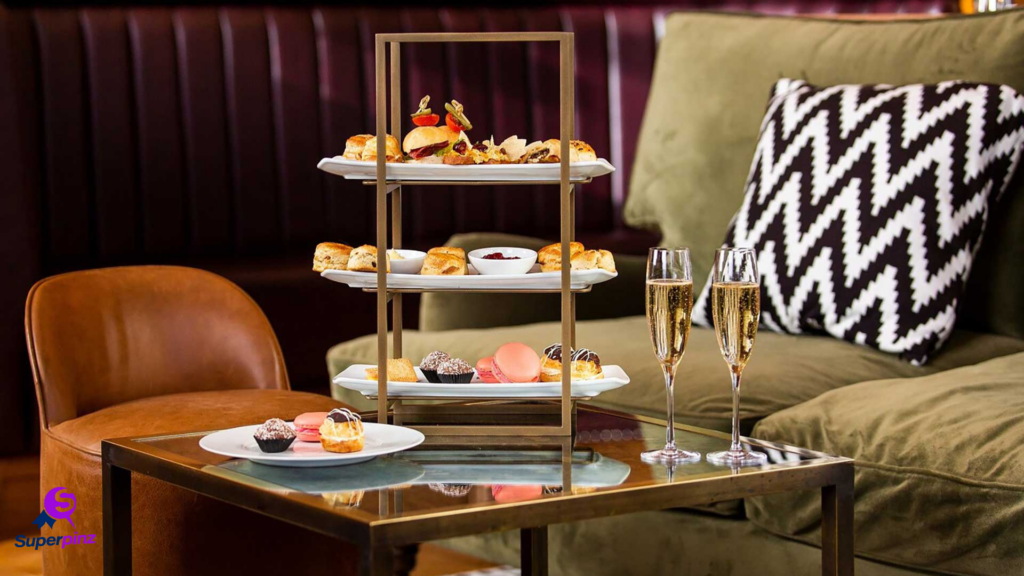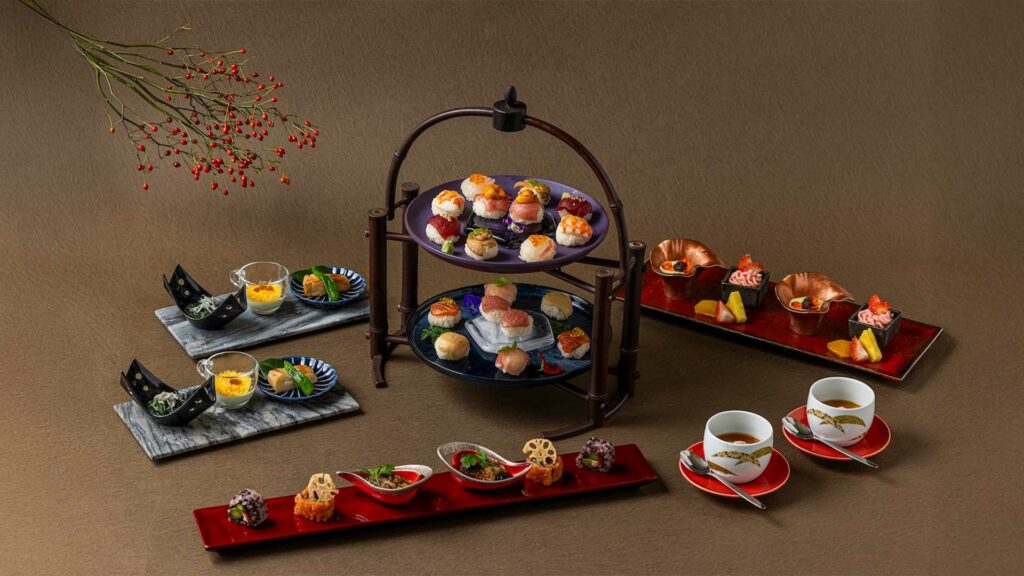Creating your own afternoon tea at home can be a wonderfully rewarding experience. Whether you’re celebrating a birthday, hosting friends, or just treating yourself, building the perfect menu is key to a successful event. Here’s how to balance savoury, sweet, and tea with ease even if you’re new to it all.
1. Start with the Structure
A traditional afternoon tea has three layers:
- Savoury items like finger sandwiches or mini quiches
- Scones with clotted cream and jam
- Sweet treats including cakes, pastries or biscuits
You don’t have to follow this format rigidly, but it’s a helpful framework for variety and flow.
2. Savoury First
Begin with 3-4 savoury items. Finger sandwiches are a classic, and easy to prepare. Try:
- Cucumber with mint cream cheese
- Smoked salmon and dill
- Egg mayonnaise and cress
- Ham and wholegrain mustard
For vegetarian guests, replace meat with roasted vegetables, hummus or cheese-based options. Mini quiches, savoury scones, or even vegan or traditional sausage rolls to add more substance.
3. Scones Are the Star
Scones are a non-negotiable element of afternoon tea. Serve them warm with clotted cream and jam and offer two per person: one plain, one with fruit or spice.
Try flavour twists like lemon and poppy seed or cheese and chive for savoury versions if you want to leave an impression and always provide proper spreading knives and individual pots for hygiene and presentation.
4. Sweet Treats That Delight
Balance your selection with a mix of textures and sizes:
- Mini Victoria sponges or Battenbergs
- Lemon drizzle slices
- Macarons or chocolate truffles
- Shortbread or jam tarts
Aim for 3–4 items per person, combining something rich like a chocolate tart with something light like a fruit pastry. Miniatures work best for a polished look.
5. Tea Pairings and Presentation
Choose two or three teas to serve:
- A black tea like Earl Grey or English Breakfast pairs well with savoury and scones
- A lighter tea like green, floral, or fruit complements sweet desserts
If you’re new to loose leaf, start with pyramid tea bags and provide milk, lemon, and sugar on the side.
Use tiered cake stands, matching crockery, and cloth napkins for a cohesive look. Place savouries on the bottom tier, scones in the middle, and sweets on top.
6. Dietary Variations
Some few ideas for planning for different diets include:
- Vegetarian: roasted veg and cheese sandwiches, veggie quiches
- Vegan: plant-based scones with coconut cream, dairy-free cakes
- Child-friendly: peanut butter and jam fingers, fairy cakes, apple slices
Keep in mind, the perfect afternoon tea menu is thoughtful, balanced, and beautifully presented. Stick to simple, delicious recipes, focus on variety, and you’ll create a tea experience that feels just as special as any luxury hotel without leaving your home.
Afternoon Tea Venues You Must Visit This May Bank Holiday
The May Bank Holiday is a welcome pause in the calendar. A chance to slow down, enjoy a proper day out, and soak up the start of warmer days. Whether you’re staying local or planning a London day trip, one of the best ways to treat yourself is with a classic afternoon tea.
Why Afternoon Tea in Spring is the Perfect Thing To Do
Spring in the UK is a welcome shift. After months of grey skies and early nights, the first signs of blossom and sunshine feel like a gentle reset. Parks start to fill again, the days stretch out longer, and everything just feels lighter including our appetite for getting out and about.
The First Time Guide to Luxury Afternoon Tea: Where to Go and What to Expect
If you’ve never tried luxury afternoon tea before, prepare to enter a world where time slows down and elegance takes centre stage. A British tradition since the 19th century, afternoon tea has evolved into a curated experience of refinement, particularly at the UK’s iconic hotels and heritage venues. But what exactly should a first-timer expect?
You can also follow us on Pinterest for more afternoon tea inspiration
Disclaimer : We often review or link to products & services from Amazon or other affiliate partners. If you click on one of our product links and make a purchase, we may earn a small commision.









